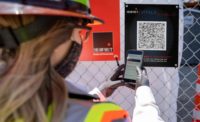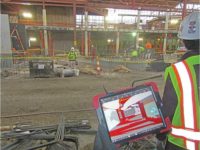When construction companies can’t build, it affects us all. According to McKinsey defines the construction industry as encompassing real estate, infrastructure, and industrial structures, and ranks it the largest industry in the global economy, accounting for 13% of the world’s GDP. Few sectors are more critical to the economy
Looking back on the first round of COVID-19 construction site shutdowns, they were based on national stay-at-home health directives. As states reopened their economies, local shutdowns occurred as the virus continued to spread among workers and visitors on construction job sites.
Construction is a highly localized business that relies on compliance with zoning, permitting, hiring, and health regulations. When an employee contracts COVID-19 on a job site, the contractor must notify the local health department and every employee or visitor who came in contact with that person for two weeks prior.
In some states, employees infected on the job are entitled to file a worker’s compensation claim for wages and medical care. The employer can contest it, but without a record of the employee’s responses to daily health screenings and the ability to contact trace, the contractor will likely lose.
Every day that a construction employee is away from the job is recorded in a log, as required by the Occupational Safety and Health Administration (OSHA). This includes asymptomatic co-workers that have been exposed. For example, if 10 employees are asymptomatic and need to quarantine for 14 days, that’s 140 days that must be reported.
Of course, some companies will under-report. That’s why the Experience Modification Rate (EMR) matters. Insurers use EMR to set a construction company’s premiums based on performance and industry averages. The lower the EMR, the lower the premium. And insurance costs are a major issue in the industry.
Combined, OSHA records and EMR scores create an overview of a construction company’s employee health. The larger the construction company, and the more employees, the higher the likelihood of getting and spreading COVID-19 — potentially increasing the company’s EMR. It only takes one major COVID-19 incident to impact ratings, potentially prohibiting a construction firm from bidding on some jobs for three years.
There are at least three ways we are all impacted when construction ceases.
First, the economy will sputter. Without construction, we can’t retrofit schools, hotels, hospitals, supermarkets, arenas, and other public buildings to adapt to a post COVID-19 world, one that includes new, safer ventilation systems and supports social distancing in shared spaces.
Second, the lopsided housing market will get more uneven. Keeping up with demand for residential housing is already difficult. Meanwhile, for the potential 40 million renters that could be evicted over the next several months, affordable housing construction projects urgently need to continue.
Third, infrastructure projects that are critical for macro-economic growth and public safety are badly needed. The fast and efficient transport of PPE and medical supplies can’t wait.
But if construction companies make the right moves now, they’ll be positioned to return to pre-pandemic levels by 2021. Extended delays due to COVID-19 shutdowns could push that recovery much later.
Biotechnology will lead to a COVID-19 vaccine that protects our health. In the interim, mobile digital technology enables construction companies to provide economic protection today. It does this by keeping job sites open and projects safe. The construction industry is slow to adopt technology, but COVID-19 safety requirements have reprioritized what’s essential. Examples include mobile apps that streamline job site check-in with touchless, paperless health screenings; drones that track progress while supporting social distancing; kiosks for automated skin temperature taking; remote video surveillance; and wearables that monitor social distancing.
Construction companies that go all in on digital will reduce the cost of COVID-19 compliance while improving their overall productivity. Digital records for health screenings enable instant contact tracing. When this is done by the employer, it’s easier to enforce. Also, employees are less likely to complain because they know their employer has a limited view of their other activities, unlike other contact tracing approaches. A variety of site awareness applications support subcontract monitoring and real-time visitor awareness. Touchless solutions using mobile phones eliminate the virus transmission and security risks of paper- and pad-based sign-in.
These measures matter now and won’t be temporary. Most forecasts predict the current health directives will be in force for at least another year, even if a vaccine is available. Yet the benefits of these digital innovations that go beyond COVID-19 protocols will be part of the new normal.





Post a comment to this article
Report Abusive Comment